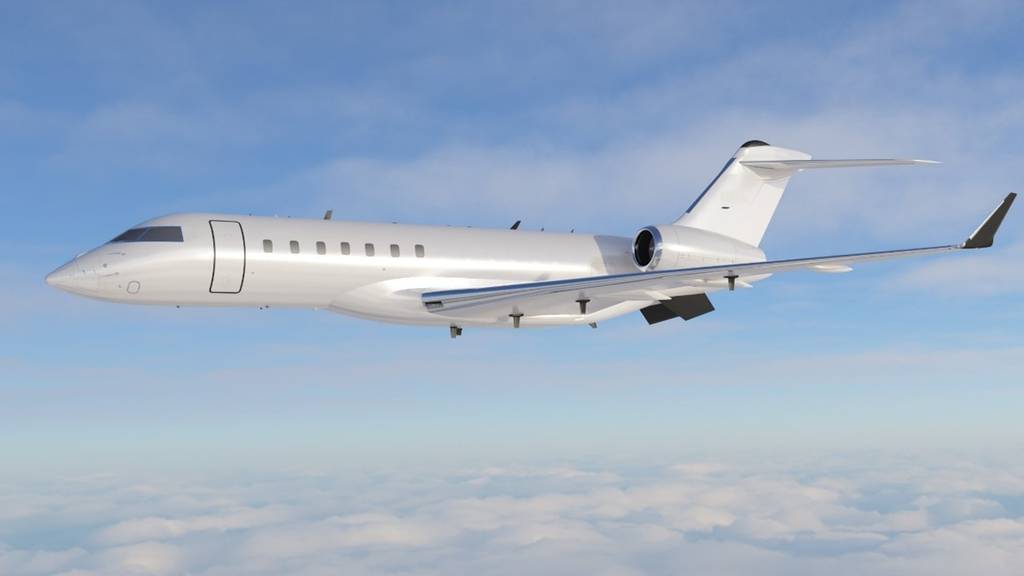
WASHINGTON — The U.S. Army awarded a contract to Bombardier Defense to provide at least one Global 6500 aircraft to serve as a prototype airframe for a new spy plane program, the service announced Wednesday.
The firm-fixed-price contract, awarded Dec. 12, includes an option to purchase two additional aircraft over a three-year period. The first aircraft’s delivery date is set for Oct. 1, the statement noted.
The High Accuracy Detection and Exploitation System, or HADES, will be the first intelligence, surveillance and reconnaissance aircraft in the Army that uses a large-cabin business jet with advanced deep-sensing capabilities, according to the service.
The new aircraft will bring “increased range, speed, endurance and aerial [intelligence, surveillance and reconnaissance] depth,” Col. Joe Minor, the Army’s project manager for fixed-wing aircraft, said in the statement.
“HADES will operate at higher altitudes than legacy turboprop platforms. Higher altitudes equate to an ability to sense farther and more persistently into areas of interest,” he added. “Deep sensing is the Army’s number-one operational imperative for the Army of 2030.”
The Army is revamping its aerial reconnaissance and electronic warfare arsenals as it moves away from its aging Guardrail turboprop planes to better prepare for potential large-scale conflict with Russia and China. The service wants a plane with much greater duration, speed and payload capacity that can see, detect and target threats from farther distances.
Leading up to the HADES program of record, the Army has built and extensively flown technology demonstrators. Those spy planes have logged nearly 1,000 sorties in the European and Indo-Pacific theaters. Two more demonstrator aircraft are expected to deploy in 2024.
The service built and deployed two aerial ISR demonstrators beginning in 2020 known as Artemis and Ares. Artemis has flown more than 600 sorties in support of U.S. European Command’s operations; Ares has flown 300 sorties in the Indo-Pacific.
The Pentagon has expressed a need to be able to engage China at a distance. That requires a certain type of asset that can perform the mission at a long range.
Artemis — or Aerial Reconnaissance and Targeting Exploitation Multi-Mission Intelligence System — uses a Bombardier Challenger 650 aircraft. The Army in 2019 awarded a contract to HII, and the company subsequently awarded a subcontract to Leidos to build the aircraft.
Ares — or Airborne Reconnaissance and Electronic Warfare System – uses a Bombardier Global Express 6500 aircraft. Alion Science and Technology, now owned by HII, won a contract to build the aircraft in 2020 and then awarded a subcontract to L3Harris Technologies to execute the work.
The Bombardier Global Express 6500 is bigger than the Challenger 650. The larger platform provides the Army with longer ranges and higher altitudes, both of which are considered key capabilities in the Pacific region.
Two additional Athena aircraft — a radar variant and a signals intelligence version — will join the force and deploy in 2024 ahead of HADES. MAG Aerospace and L3Harris are teaming up to outfit a Bombardier Global 6500 with ISR sensors for the radar variant; Sierra Nevada will provide the signals intellience aircraft with its RAPCON-X sensor package.
“When you think of long-range fires, the additional word is precision. Precision implies that you need a target. If you’re going to have a target, you need to be able to surveil the area and to identify a target of interest,” Steve Patrick, Bombardier Defense’s vice president, told Defense News in an interview last month.
“The way that we view the problem set is not to have a single solution for a single problem,” he added, “but have a solution that can satisfy multiple problems, that is redeployable across the globe very quickly, that can be pivoted to where the current crisis is.”
The Army said last year that the first phase of the HADES program will include two different aircraft with different sensor packages.
Program Executive Office Aviation is taking the contract lead for the HADES program, while PEO Intelligence, Electronic Warfare and Sensors will work to acquire payloads for platforms chosen for the program.
In September 2022, the Army awarded L3Harris and Raytheon’s Applied Signal Technology contracts to develop sensors for HADES. At least one team has formed ahead of the HADES program competition: L3Harris, Leidos and MAG Aerospace announced in October they were teaming up for the effort.
Author: Jen Judson
Source: DefenseNews



